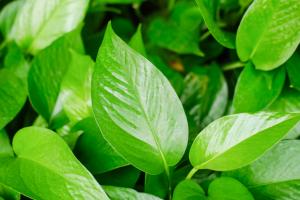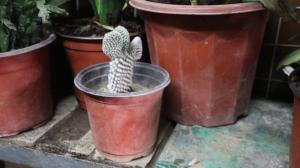Introduction:
Black walnuts are popular trees among homeowners for their aesthetic value and unique features that make them the center of attention in any garden or yard. However, planting around black walnut trees can be a challenge due to the release of a compound called juglone from their roots, leaves, and nuts that make it difficult for most plants to grow. Fortunately, there are a select number of plants that can thrive in the presence of black walnuts.
Factors to Consider:
Prior to deciding on what to plant around a black walnut tree, it is essential to consider several factors like type of soil, amount of sunlight, and tolerance to juglone. For instance, the soil must be rich, well-draining, and free from weeds or other competing plants. Additionally, black walnut trees prefer partial to full sun, depending on the region, and the plants selected must have a moderate to high tolerance to juglone.
Herbaceous plants:
Herbaceous plants are those plants that do not have a woody stem and complete their lifecycle within one year. Some examples of herbaceous plants that can grow around black walnut trees include wild ginger, solomon's seal, and hosta. Wild ginger has a natural habitat around black walnut trees, and its lush green foliage and unique flowers make it an excellent addition to any garden. Solomon's seal has an extensive root system that can handle the competition from black walnut trees and provide a stunning display of white flowers in spring. Hosta is another shade-loving plant that can tolerate the toxic effects of juglone and grow around black walnut trees.
Perennial plants:
Perennial plants are those plants that live for more than two years and can withstand the toxic effects of juglone. Some examples of perennial plants that can grow around black walnut trees include hellebores, astilbe, and brunnera. Hellebores, also known as Lenten roses, are stunning plants that can tolerate low light and acidic soil conditions. Astilbe is another shade-loving plant that can handle the toxicity of juglone and provide a beautiful display of pink or white flowers in spring. Brunnera, also called Siberian bugloss, has heart-shaped leaves and delicate blue flowers that can light up any shady corner of the garden.
Shrubs:
Shrubs are woody plants that can grow up to 6 meters in height and have several stems or trunks. Some examples of shrubs that can thrive around black walnut trees include hydrangea, viburnum, and elderberry. Hydrangea is a beautiful and popular shrub that can handle partial shade and acidic soil conditions. Viburnum is an excellent choice for yards or gardens due to its ornamental properties and its ability to tolerate juglone. Elderberry is another shrub that can handle the toxicity of juglone and provide a bountiful harvest of fruit or flowers every year.
Conclusion:
Black walnut trees are striking and unique trees, but their toxic effects on plants can make it challenging to choose what to plant around them. However, by selecting plants that have a high tolerance to juglone, it is possible to have a beautiful and thriving garden or yard around black walnut trees. Whether it is herbaceous plants, perennial plants, or shrubs, there are plenty of options to choose from that can add to the beauty and value of any black walnut tree.

 how many times do yo...
how many times do yo... how many planted tre...
how many planted tre... how many pine trees ...
how many pine trees ... how many pecan trees...
how many pecan trees... how many plants comp...
how many plants comp... how many plants can ...
how many plants can ... how many plants and ...
how many plants and ... how many pepper plan...
how many pepper plan...
































